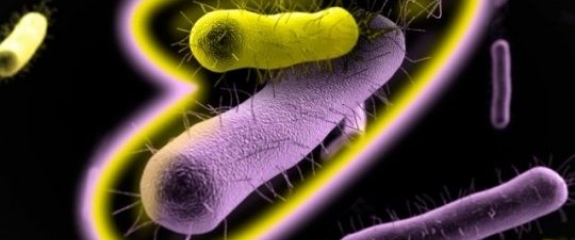Teamwork enables bacterial survival

A new study from MIT finds that two strains of bacteria that are each resistant to one antibiotic can protect each other in an environment containing both drugs.
The findings demonstrate that mutualism, a phenomenon in which different species benefit from their interactions with each other, can help bacteria form drug-resistant communities. This is the first experimental demonstration in microbes of a type of mutualism known as cross-protection, which is more commonly seen in larger animals.
The researchers focused on two strains of E. coli, one resistant to ampicillin and the other resistant to chloramphenicol. These bacteria and many others defend themselves from antibiotics by producing enzymes that break down the antibiotics. As a side effect, this also protects cells that don't produce those enzymes, by removing the antibiotic from the environment.
"Any time that you're breaking down an antibiotic, there's this potential for cross-protection," says Jeff Gore, the Latham Family Career Development Associate Professor of Physics and the senior author of the study, which appears in the Proceedings of the National Academy of Sciences the week of May 16.
The MIT team found that, indeed, both strains could survive in an environment where both antibiotics were present, even though each was only resistant to one of the drugs. This type of situation is likely also found in the natural world, especially in soil where many strains of bacteria live together.


